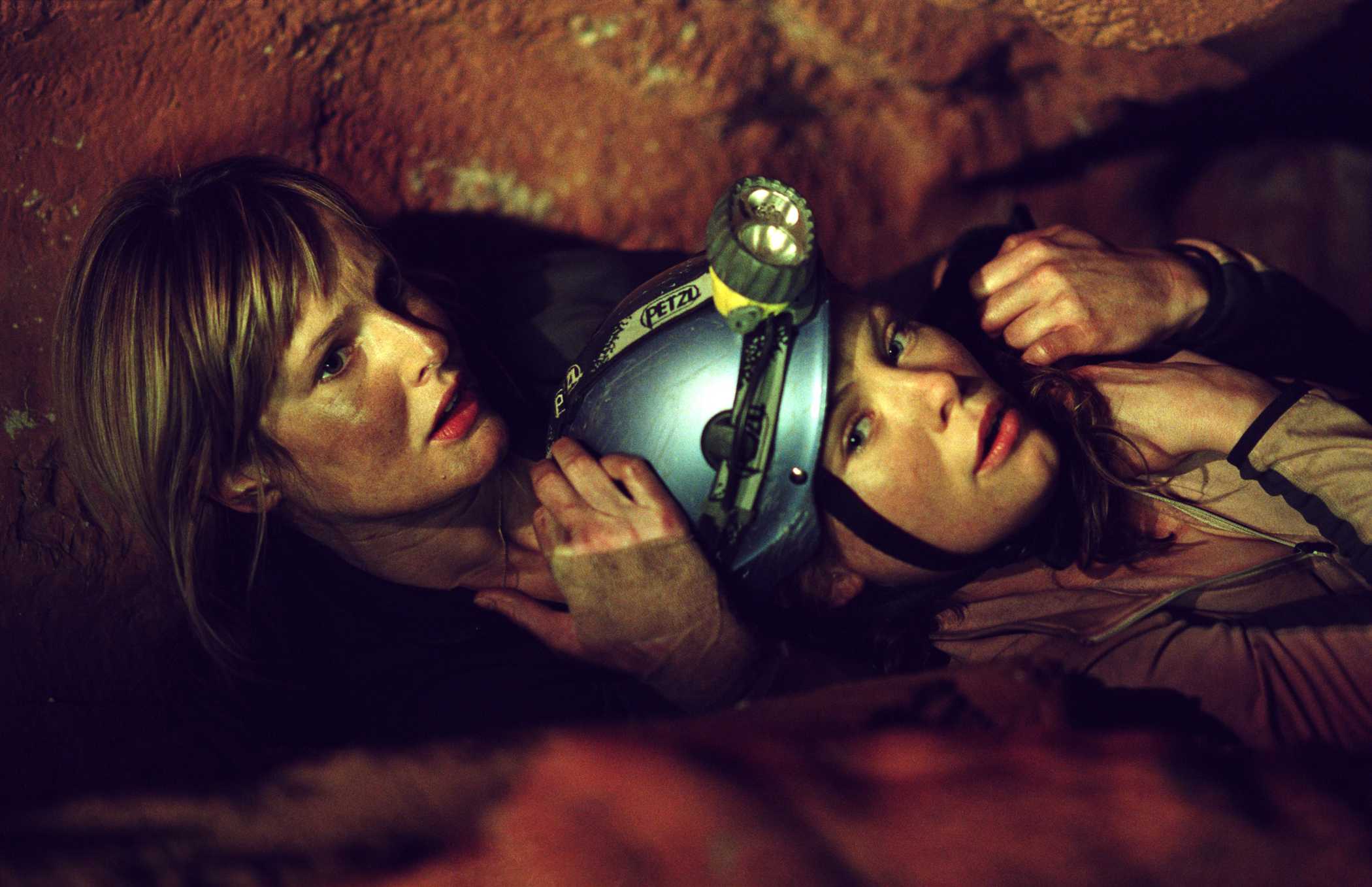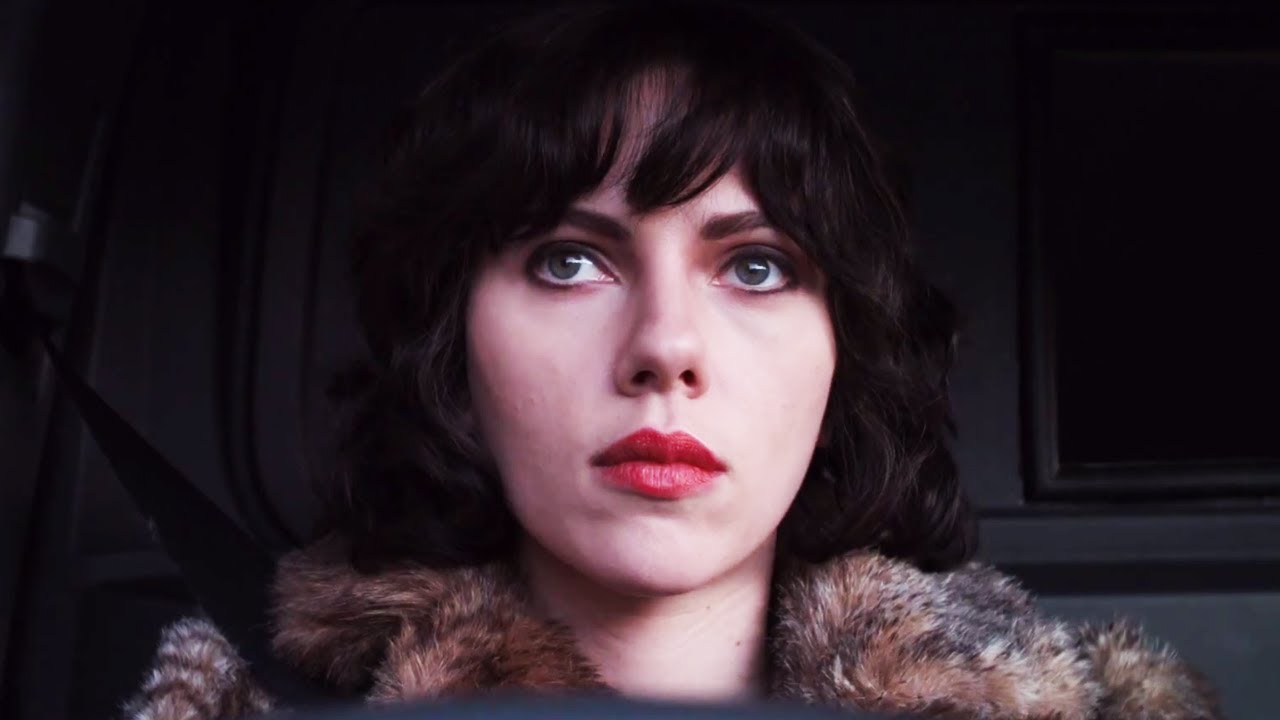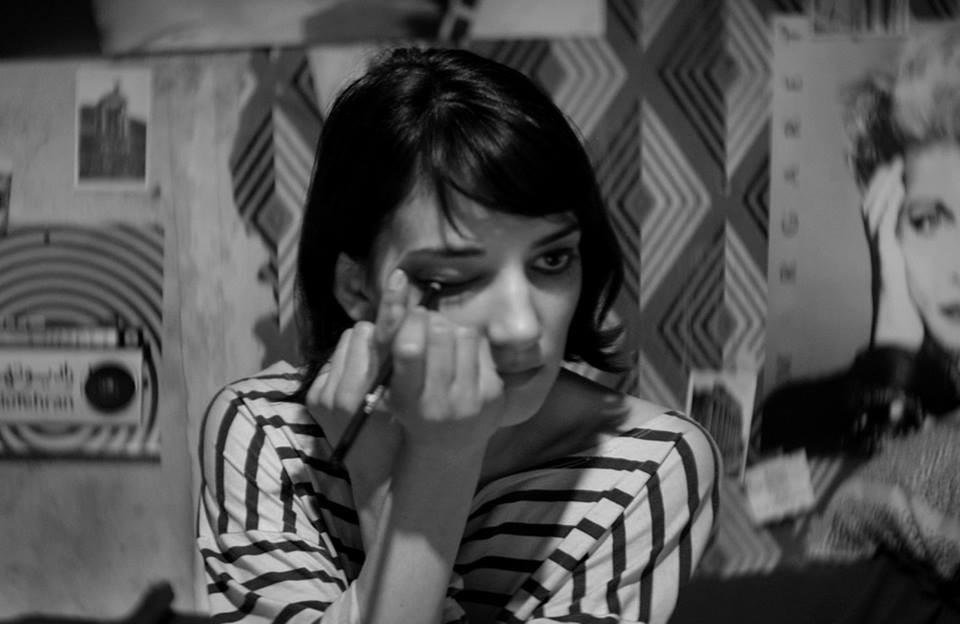11. The Descent (2005)

Neil Marshall’s ‘The Descent’ is one of the best horror films of the twenty-first century. Taking us deep into the womb of insanity, it offers a terrifying glimpse of womanhood and pregnancy.
The film follows six women who become trapped in an unknown cave system, only to be hunted by a strange breed of subterranean creatures.
The film’s greatest achievement perhaps lies in the presentation of its labyrinthine landscape. The undiscovered cave system seems at first a virginal womb; a safe and warm place. Slowly however the cavern becomes associated with blood, first in the red glow of the characters’ flares and then in actual pools of viscera.
The walls are dripping with amniotic fluid, and the cave itself has given rise to a brood of violent foetuses. The metaphor of the cave system which matures and becomes soiled by its blind, unborn children, is projected onto the bodies of the women as they’re chewed and penetrated.
It’s important to note that the film features an all-female cast. The monsters force the ill-fated expeditioners to become monsters themselves. The bleakness of the tale snatches away any opportunity to define any of the female characters by any simplistic male hero archetype; the lesson being that women are as equally complex and cruel as men, and that any person will resort to the most terrible things in order to survive.
It’s no exaggeration to call ‘The Descent’ a claustrophobic nightmare. In the end the womb makes monsters of us all; the women and the cave’s children become inseparable.
12. Antichrist (2009)

As perversely mesmerising as it is impenetrable, Lars Von Trier’s highly controversial and experimental tale stunned and polarised audiences. It’s a horrific nightmare which pits masculinity against femineity, reason against nature, order against anarchy.
An unnamed therapist (Willem Dafoe) takes it upon himself to cure his grieving wife (Charlotte Gainsbourg), by taking her to a remote cabin where nature plunges them into insanity and misery.
Like many horror films before it, ‘Antichrist’ associates the “terrible place” of nature with femineity, in contrast to the apparent security of the patriarchy. Ultimately it’s a conflict between man, who tries to dominate the world through explanation and knowledge, and nature, which is in itself inexplicable and amoral; an object of chaos.
‘He’ (as the husband is anonymously titled) is a misogynist who believes himself an authority on scientific matters and who believes he owns paternity over his wife. The world punishes his masculine, authoritative suppositions with madness.
‘Antichrist’ evokes fear in meaninglessness, which on gender terms, reflects man’s inability to understand and control the female mind. Man’s omnipotence fades and the notion that the universe is controlled by a logical and masculine God is aggressively destabilised; chaos reigns.
‘Antichrist’ is poignant, impermeable, and vicious. In spite of its criticism, the film was never made to make sense; it operates in a strange faction where masculine logic has lost all potency and where the freed women prevail.
13. Under The Skin (2013)

Delivering true to its name, Jonathan Glazer’s sci-fi horror ‘Under the Skin’ is eerie, even when you hardly understand what’s happening. By reversing the gender polarity and then restoring it, Glazer warns of the power of beauty and the danger of becoming too comfortable in one’s assigned gender role.
The film is essentially split in two parts; in the first, an alien disguised as a beautiful woman (Scarlett Johansson) tours Scotland luring lonely men to their demise, and in the second, the alien’s curiosity of human life leads her into a false sense of security.
‘Under the Skin’ initially plays on masculine fears of beauty and female power by reversing rape culture. In the film, it is an attractive woman who lures men into her van, takes them home, undresses them, and kills them. A man’s desire and a man’s loneliness will destroy him. The men are reduced to their primal urges both literally, in the case of their nakedness against the black backdrop, and figuratively, in the case of the sexual desire that the predator is manipulating. As the men sink into the pond it become apparent that power had shifted; it’s a warning of how vulnerable men are to beauty.
The second half shifts its agenda to the social status of women. Despite retreating to the comfort of nature, the alien still will be destroyed for refusing a man’s sexual advances. It leaves on the unsettling note that it’s safer for a person to wear the skin of a woman than to be a woman, body, soul and all.
‘Under the Skin’ is one of the greatest films, of any genre, to come from the new millennia so far. Put simply, it taps into that deep, unspoken fear that our gender, and indeed our very humanity, is only skin-deep.
14. The Babadook (2014)

Jennifer Kent’s nightmarish debut is a masterwork of Australian horror. Subverting the male gaze and taking a fresh and terrifying take upon the genre, the film taps into feminine fears of motherhood and repressed sexuality.
Amelia (Essie Davis), a grieving mother struggling to raise her awkward son (Noah Wiseman), finds her life engulfed by a dark, ghoulish presence.
The true success of ‘The Babadook’ is its ability to make the familiar setting of the suburbia suffocating and dreadful. Amelia’s social isolation and maternal frustration manifests in two forms: first, her aggressive lashing out at her son, and second, the tortuous haunting of the Babadook. It’s the ultimate fear of the mother: that you might try and destroy the one thing that needs your protection most. The loneliness of Amelia taps into another motherly fear: that a mother is reliant on the children who must one day leave her.
On another note, ‘The Babadook’ subverts one of the usual traits of horror genre, that which punishes female sexuality. In the typical slasher, a female character would by identified as either a “whore”, and thus be killed for it, or a “virgin” who would become “the Final Girl’, and adopt enough masculine characteristics to survive the ordeal.
In ‘The Babadook’ however, evil is instead associated with the suppression of female sexuality. Amelia is shown as being sexually frustrated; her lack of sexual intimacy, embodied in the ghostly absence of her husband, is another dark force which circles around and gives shape to the monster.
‘The Babadook’ is poignant, chilling and, above all, terrifying. By taking a feminine lens on a genre all-too-often dominated by men, it offers a unique glimpse into the womanly fears which society has labelled taboo.
15. A Girl Walks Home Alone At Night (2014)

Ana Lily Amirpour’s vampire western is a truly original experience. Combining an array of genre conventions and cultural influences, it offers a glimpse of a world between nations and between centuries where patriarchal greed has sucked the land dry and where the woman has become a strange, murderous other.
Set in the corrupt ghost town of ‘Bad City’, the films follows an unusual romance between Arash (Arash Marandi) and an unnamed vampire (Sheila Vand).
Whereas the film’s title ironically emphasises the vulnerability of women, positioning them as a victim, ‘The Girl’ in the movie is empowered as the predator. She uses her beauty to lure men to their demise. The fear, of course, is that women have become monstrous creatures in the eyes of society; an unspoken and nocturnal other. She’s both empowered and lonely, the every woman and the mythical creature; her name is never revealed and she’s often shown as bat-like, eerily gliding closer from the shadows, caped in a chador.
Observed from a male perspective, the movie taps into fears of failing masculinity. ‘Bad City’ is a patriarchy where the women have been forced to the shadows as either vampires or prostitutes. The social order however is deteriorating, the town itself is depicted as an industrial wasteland and men who show blatant disrespect towards women are punished. The patriarchal institution is compared to a lawless frontier town; a relic of a dead time fading in the desert.
Featuring luscious cinematography, a great soundtrack, and an endless list of cultural references, ‘A Girl Walks Home Alone At Night’ offers a new breed of cinematic experience. Its beauty is not shallow either; it bears with it a worthwhile message: to respect women, regardless of whether they’re a victim or a predator, and to remember that all your sins will be payed for in blood.